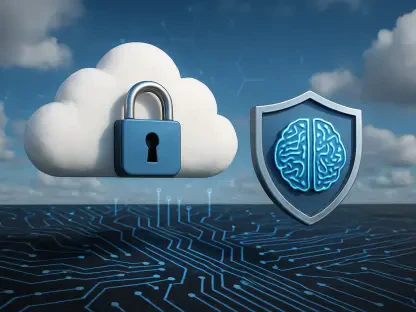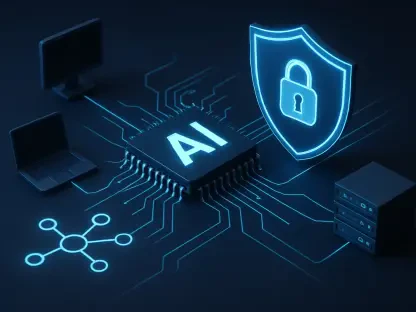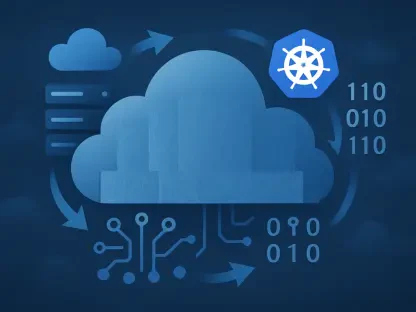The rapid evolution of cybersecurity threats poses significant challenges to organizations across industries. As malicious actors develop increasingly sophisticated techniques, the question arises: are organizations truly prepared to defend themselves against these threats? In a landscape where cyberattacks can lead to devastating consequences, from financial loss to reputational damage, the preparedness of organizations is paramount.
The Growing Complexity of Cyber Threats
Evolving Attack Techniques
In recent years, cyber threats have become increasingly complex, with attackers employing advanced methods to breach security defenses. Ransomware-as-a-service (RaaS) exemplifies how cybercriminals have evolved their approach, commoditizing ransomware attacks and making them accessible to a broader range of malicious actors. Additionally, the rise of state-sponsored cyber activities demonstrates the strategic use of cyber attacks for espionage, sabotage, and disruption. These evolving tactics emphasize the need for organizations to continuously update their defensive measures to keep pace with malicious actors.
The sophistication of these attacks is evident in the variety of techniques employed. Advanced persistent threats (APTs) use highly refined methods to exploit vulnerabilities in widely-used software platforms. Their ability to launch sophisticated attacks highlights the importance of rigorous security practices for organizations. The constant evolution of attack techniques demands that organizations not only implement cutting-edge defenses but also remain vigilant and adaptable in their cybersecurity strategies.
The Role of Advanced Persistent Threats (APTs)
State-sponsored groups, particularly APTs, present a unique threat to global security. These entities leverage cyber attacks to achieve objectives related to espionage, sabotage, and disruption. APTs are known for their sophisticated strategies, exploiting vulnerabilities in popular platforms. This level of sophistication underscores the need for rigorous security practices and continuous vigilance.
Organizations must recognize the threat posed by APTs and prioritize security measures that can counteract their advanced tactics. This involves not only patching known vulnerabilities but also anticipating and preparing for new threats. Continuous monitoring, threat intelligence, and proactive defense mechanisms are crucial in mitigating the impact of APTs. By understanding the capabilities and objectives of these state-sponsored groups, organizations can better position themselves to defend against their attacks.
Ransomware: A Persistent Menace
Ransomware Surge
Ransomware attacks have become a pervasive and persistent threat to organizations worldwide. The Medusa ransomware group has seen a significant surge in activity, with a 42% increase in attacks. This group employs techniques such as Bring Your Own Vulnerable Driver (BYOVD) and double extortion, where they not only encrypt data but also threaten to release sensitive information if the ransom is not paid. These tactics highlight the evolving nature of ransomware threats and the need for organizations to enhance their defensive measures.
The impact of ransomware attacks on organizations can be profound. Beyond the immediate financial cost of ransom payments, these attacks often result in data breaches and prolonged downtime, affecting operational efficiency and damaging reputations. Organizations must adopt robust backup strategies, endpoint protection, and incident response plans to mitigate the risk and impact of ransomware attacks. Regular employee training and awareness programs can also help in recognizing and preventing potential ransomware threats.
Impact on Organizations
The financial and operational impact of ransomware attacks can be devastating. Organizations facing such attacks often find themselves forced to make substantial ransom payments to regain access to their data. Additionally, the downtime caused by ransomware can disrupt critical business operations, leading to lost revenue and damaged reputation. This underscores the need for comprehensive strategies to prevent and respond to ransomware incidents.
Organizations must focus on strengthening their cybersecurity posture to protect against ransomware. This involves implementing strong backup solutions, network segmentation, and regular security assessments. By having a robust backup system, organizations can ensure that they can recover their data without succumbing to ransom demands. Network segmentation helps in limiting the spread of ransomware within the organization’s infrastructure. Continuous security assessments allow organizations to identify and address potential vulnerabilities that ransomware could exploit.
Supply Chain Vulnerabilities
Exploiting the Supply Chain
The software supply chain has become a prime target for cybercriminals seeking to distribute malware. Recent campaigns involving PyPI repositories and GitHub highlight the insidious nature of these attacks. By targeting developers and open-source repositories, malicious actors can introduce malware into the software development process, potentially affecting millions of devices. This exploitation of supply chain vulnerabilities underscores the necessity for rigorous scrutiny and monitoring.
Organizations must ensure robust vetting processes for third-party software and open-source components to prevent supply chain attacks. This includes thorough code reviews, vulnerability assessments, and continuous monitoring of software dependencies. By implementing stringent scrutiny measures, organizations can detect and mitigate potential threats within their supply chain. Collaboration with software vendors and participation in industry initiatives focused on supply chain security can further enhance an organization’s defenses.
The Need for Scrutiny
Given the growing trend of exploiting supply chain vulnerabilities, organizations must prioritize the scrutiny of third-party software and open-source components. This involves implementing rigorous vetting and monitoring processes to ensure that all software used within the organization is secure. The recent PyPI malware campaign and GitHub-hosted malware incidents highlight the importance of these measures.
Organizations should adopt a multi-layered approach to supply chain security. This includes conducting thorough code reviews, employing automated vulnerability scanning tools, and engaging in regular security audits. Additionally, organizations should foster relationships with software vendors and collaborate on security best practices. By maintaining a continuous focus on supply chain security, organizations can proactively detect and address potential threats, thereby reducing their risk exposure.
Addressing Critical Vulnerabilities
Key Vulnerabilities
Several significant vulnerabilities have been identified in widely-used platforms such as PHP CGI, Apache Tomcat, and SCADA systems. These vulnerabilities, if left unaddressed, could lead to unauthorized access and system compromise. For instance, flaws in PHP CGI can enable remote code execution, allowing attackers to gain control over affected systems. Similarly, vulnerabilities in Apache Tomcat pose threats to server integrity, while weaknesses in SCADA systems present risks to industrial control environments.
To mitigate these vulnerabilities, organizations must adopt proactive measures such as timely patching and implementing strict access controls. Regularly updating software and applying security patches are critical steps in safeguarding systems against exploitation. By enforcing rigorous access controls and monitoring system activities, organizations can minimize the risk of unauthorized access and protect their digital infrastructure.
Mitigation Strategies
Effective mitigation strategies are essential for addressing the critical vulnerabilities identified in various platforms. Timely patching of known vulnerabilities is a fundamental practice that organizations must prioritize. Implementing strict access controls can prevent unauthorized access and potential exploitation of system weaknesses. Additionally, continuous monitoring and threat intelligence can aid in detecting and responding to emerging vulnerabilities.
Organizations should adopt a proactive approach to cybersecurity, focusing on vulnerability management and risk mitigation. This involves regularly updating software, conducting security assessments, and engaging in threat intelligence sharing. By staying informed about emerging threats and vulnerabilities, organizations can enhance their defensive measures and reduce the likelihood of successful cyber attacks. Collaboration with industry peers and participation in security initiatives can also bolster an organization’s cybersecurity posture.
Regulatory and Compliance Challenges
Evolving Regulations
The regulatory landscape for cybersecurity is continuously evolving to address emerging challenges. Frameworks such as the European Union’s General Data Protection Regulation (GDPR) and California’s Consumer Privacy Act (CCPA) set stringent standards for data privacy and security. These regulations require organizations to implement robust data protection policies and ensure compliance with evolving legal requirements. As regulatory standards evolve, organizations must stay abreast of changes and adapt their compliance strategies accordingly.
Effective compliance requires regular audits, employee training, and comprehensive data protection measures. Organizations must establish clear policies and procedures to safeguard sensitive information and maintain compliance with regulatory requirements. Regular audits can help identify gaps in security and compliance, enabling organizations to address them proactively. Employee training programs are crucial for fostering a culture of security and ensuring that all staff members are aware of their roles and responsibilities in maintaining compliance.
Compliance Strategies
Adhering to evolving regulatory standards necessitates the implementation of effective compliance strategies. Organizations should prioritize regular audits to assess their security measures and ensure compliance with legal requirements. Employee training programs are essential for building a culture of security and equipping staff with the knowledge needed to maintain compliance. Additionally, robust data protection policies and procedures are critical components of effective compliance strategies.
Organizations must stay informed about regulatory changes and adapt their practices accordingly. This involves continuous monitoring of legal developments and engaging with industry experts and legal advisors. By maintaining a proactive approach to compliance, organizations can effectively navigate the complexities of regulatory requirements and protect their digital assets. Collaboration with regulatory bodies and participation in industry initiatives can further enhance an organization’s compliance efforts.
Technological Impact on Security
AI and Machine Learning
Artificial intelligence (AI) and machine learning (ML) technologies have revolutionized the field of cybersecurity, offering enhanced capabilities for threat detection and response. However, these technologies also present new challenges, as cybercriminals leverage AI and ML to develop more sophisticated and evasive attacks. AI-powered phishing schemes and ML-enhanced malware demonstrate the potential for these technologies to be exploited by malicious actors.
Organizations must embrace AI and ML to enhance their cybersecurity defenses while remaining vigilant about the risks associated with these technologies. Implementing AI-driven threat detection systems can improve the speed and accuracy of identifying potential threats. However, organizations must also invest in continuous monitoring and research to anticipate and counteract AI and ML-based attacks. Collaboration with industry partners and participation in research initiatives can further bolster an organization’s ability to leverage AI and ML effectively.
Quantum Computing Threats
Quantum computing represents a significant potential threat to current encryption methods. The advanced computational capabilities of quantum computers can potentially break widely-used encryption algorithms, presenting a new frontier of cybersecurity challenges. Organizations must prepare for the eventuality of quantum attacks by exploring quantum-resistant encryption techniques and investing in research to develop robust defenses.
The advent of quantum computing requires organizations to rethink their approach to encryption and data security. Implementing quantum-resistant encryption techniques can safeguard sensitive information against future threats posed by quantum computers. Additionally, organizations should engage in collaborative research and development efforts to stay ahead of quantum computing advancements. By proactively addressing the challenges presented by quantum computing, organizations can enhance their cybersecurity posture and protect their digital assets.
In-Depth Analysis of Recent Threats
PeakLight Malware
The PeakLight malware represents a significant threat to organizations, characterized by its advanced evasion techniques and data exfiltration capabilities. This malware can bypass traditional security measures and extract sensitive information, posing a substantial risk to affected organizations. Strengthening defenses against such malware is imperative to mitigate its impact and protect sensitive data.
Organizations must adopt a multi-faceted approach to defend against PeakLight malware. This includes implementing robust endpoint protection, continuous monitoring, and advanced threat detection systems. By enhancing their security measures, organizations can detect and respond to PeakLight malware before it can cause significant damage. Regular security assessments and updates are also crucial to ensure that defenses remain effective against evolving malware strains.
Emerging Threat Patterns
Recent attacks by groups like Blind Eagle highlight the use of weaponized URL files to deliver malware payloads. These attacks demonstrate the innovative tactics employed by cybercriminals to bypass traditional security measures. Enhancing email filtering and monitoring for suspicious URLs can mitigate the risks associated with such attacks.
Organizations must prioritize the detection and mitigation of emerging threat patterns. This involves implementing advanced email filtering systems and continuous monitoring of network activities. By staying informed about the latest attack techniques, organizations can adapt their defensive measures to counteract new threats. Collaboration with industry peers and participation in threat intelligence sharing initiatives can further enhance an organization’s ability to detect and respond to emerging threats.
Securing Digital Infrastructure
Practical Defenses
Adopting a proactive approach to cybersecurity is essential for organizations to effectively secure their digital infrastructure. This involves focusing on practical defenses such as strengthening backup strategies and endpoint protection. These measures can mitigate the impact of sophisticated ransomware attacks like Medusa and ensure the resilience of the organization’s systems.
Organizations should invest in comprehensive backup solutions to safeguard their data against ransomware threats. Regularly testing and updating backup systems can ensure that data recovery processes remain effective. Additionally, implementing robust endpoint protection measures can prevent ransomware and other malware from compromising critical systems. By adopting proactive defensive strategies, organizations can enhance their cybersecurity posture and protect their digital assets.
Active Directory Security
Securing directory services is crucial in defending against advanced persistent threats (APTs) such as RedCurl. This group leverages tools like Active Directory Explorer to execute sophisticated attacks. Organizations must prioritize the security of their directory services and monitor activities related to directory management.
Implementing stringent access controls and continuous monitoring of directory services can prevent unauthorized access and potential exploitation by APTs. Regular security assessments and updates are essential to ensure that directory security measures remain effective. By proactively defending their directory services, organizations can mitigate the risk posed by groups like RedCurl and enhance their overall cybersecurity posture.
Conclusion
The rapid evolution of cybersecurity threats poses significant challenges to organizations across various industries. As malicious actors continually develop more sophisticated techniques, the crucial question emerges: are organizations genuinely prepared to defend themselves against these increasingly advanced threats? In a digital landscape where cyberattacks can have disastrous consequences, ranging from substantial financial losses to severe reputational damage, the level of preparedness within organizations is of utmost importance.
Organizations must stay ahead of the curve by adopting cutting-edge security measures and staying informed about the latest threats. This involves regular updates to security protocols, comprehensive employee training programs, and the implementation of advanced cybersecurity technologies. It’s not only about preventing breaches but also about having robust response strategies in place. A swift and effective response can significantly mitigate the impact of a cyber incident.
Moreover, collaboration with external experts and staying up-to-date with industry best practices can enhance an organization’s defenses. Despite the inherent challenges, organizations that prioritize cybersecurity and invest in robust defense mechanisms can better safeguard their data, operations, and reputation. The question of preparedness is no longer just an IT issue—it’s a critical business imperative.









